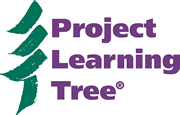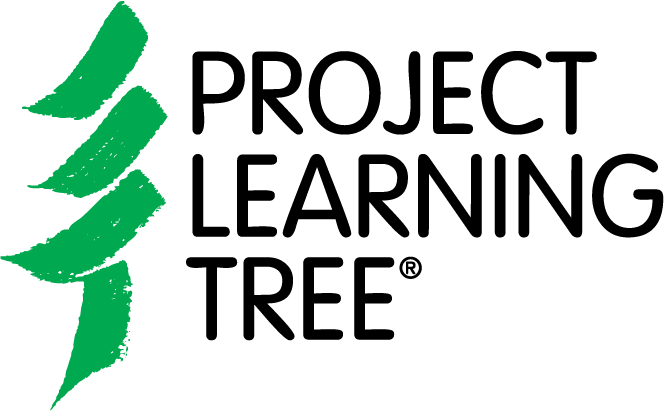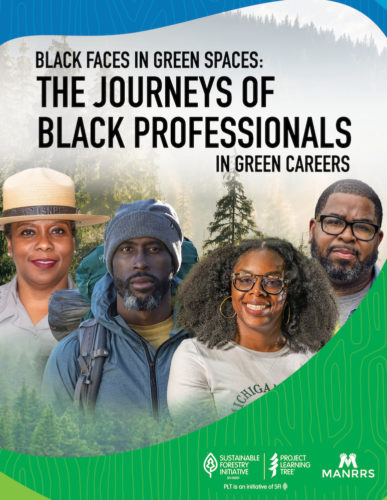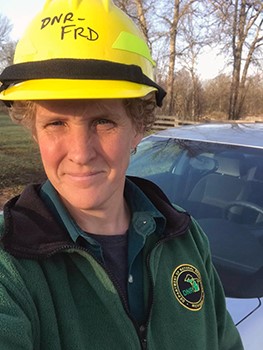
Every March, we celebrate two special days – International Women’s Day and International Day of Forests. We’re excited to highlight Brenda Haskill, who has shared her story of being a woman working for the woods.
I’m lucky to have developed an early love for the forest.
I was raised in a logging family, and my mom started driving the logging truck for our business when I went to kindergarten. Every time I smell fresh-cut wood, see sawdust and hear a diesel engine while out on a harvest site in the forest, I am transported back to those early years.
It never occurred to me as a child that there were perceptions about what women could not or should not do as a career. Reality set in during college. When I attended Michigan Technological University in the late 1980s to obtain a Bachelor of Science degree in forestry, there were five women and around 35 men in the program.
Unfortunately, diversity has not expanded much in the past 30 years of my career, and the percentage of women and minorities in forestry is still sadly low. As of 2019, women represented just 16% of forestry and conservation professionals in the United States, according to the Society of American Foresters.
When people find out I’m a forester, I often get asked if I’m a “ranger.” In most of North America, a ranger is a person we meet at our parks and campgrounds who helps care for the facilities and assures we all enjoy our time spent at them.
Since I’m not a ranger, the next question is, “So, what’s a forester?”
Foresters care for and manage forests and trees to suit desired outcomes.
We are urban foresters, consulting foresters, state government foresters, and more. We have a deep love for trees and the forested landscape.
Traditional foresters manage tracts of land with specific goals. Sometimes, that’s to provide a haven for wildlife. Other times, it’s for timber production to create income opportunities. On other occasions, it’s to help the forest be as healthy as possible. We also often manage for a mixture of all those outcomes, depending on who owns the land.
Just like other professions, there are various branches (pun intended) of forestry.
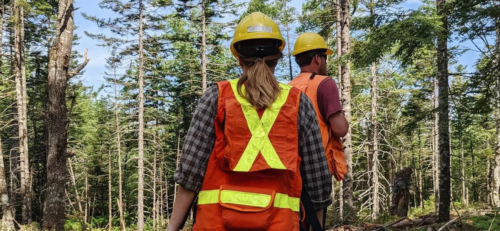 When my career began, if you studied forest management, you were a forester. Foresters can now study ecology, ecosystems, environment, hydrology, engineering, and many more specific courses of study.
When my career began, if you studied forest management, you were a forester. Foresters can now study ecology, ecosystems, environment, hydrology, engineering, and many more specific courses of study.
Working as a woman in forestry has difficult days. Even now, I am occasionally mistaken for a secretary and asked if male colleagues could better talk about the issues at hand.
But as I walk into meetings with a hard hat and 30 years in my profession, I enjoy watching the faces of sawmill owners and loggers as I share my experience and discuss industry specifics like lumber thickness, logging site complications, and trucking issues.
Their surprise at my expertise turns to curiosity and then to acceptance as they enjoy discussing the finer points of the forest industry with me.
Gender diversity is slowly growing in the sector, due in part to the efforts of groups like the Women’s Forest Congress and Women Owning Woodlands (a former Sustainable Forestry Initiative [SFI] grant recipient), both formed during the last several years.
The ownership of North American forests is shifting to include more women. Agencies and landowners are searching for women foresters to connect with and learn from as they own and manage their own forestland. The need for women foresters is growing every year.
We all have those days that make us question our career paths, but it’s easier to turn those days around when you’re spending time in the relaxing, deep cool green of a forest – and you get paid to do it.
We hear a great deal lately about forest bathing and how good it is for us to spend time outside, immersed in any part of nature. Just 15 minutes a day at your local park spent sitting under a tree, looking at a pond, or listening intently to birdsong provides numerous short and long-term mental and physical health benefits.
A career in natural resources can be the most rewarding path chosen because, as John Muir once wrote, “Into the forest I go, to lose my mind and find my soul.”
A day in the forest can quiet the mental noise in our brains and enrich our souls with all that surrounds us.
Learn more about green careers in forestry and conservation
- Read more stories from Michigan Department of Natural Resources employees and partners like Brenda at Michigan.gov/DNRStories.
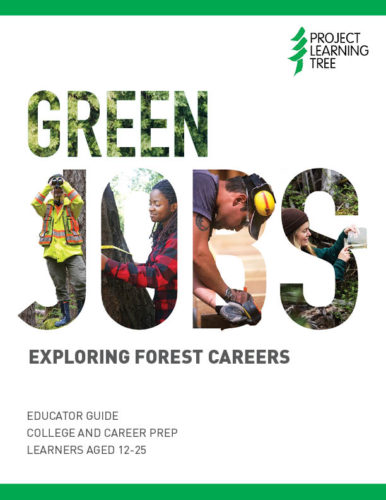
- Discover green jobs best suited to your personality with Project Learning Tree’s free trial of the Green Jobs Quiz at plt.org/GreenJobsQuiz.
- The Green Jobs guide is the perfect tool to help young people ages 12-25 learn about green jobs in forestry and natural resource management in settings ranging from community youth programs and school classrooms to college and career prep, as well as field trips and forest tours.
- Explore types of green jobs and their many individual and collective benefits, browse free resources, and assess your STEM (science, technology, engineering, and mathematics) skills at org/WorkingForForests
- Check out SFI’s Chief Sustainability and Diversity Officer, Bettina Ring’s video celebrating the many contributions of women in forestry and natural resources conservation for International Women’s Day.
- The forest sector continues to struggle with workforce diversity, with a recent U.S. Census Survey finding that less than 3% of foresters and conservation scientists identify as African American. Help young Black Americans discover opportunities for rewarding careers in forestry and conservation with the Journeys of Black Professionals in Green Careers guide.
- Mentorship creates opportunities to share tips and resources, transfer skills, and boost the confidence of mentees and mentors alike! It’s important to support increasing mentorship opportunities for natural resource professionals and environmental educators, especially for women and young people from underrepresented communities. Learn more about how the PLT Green Mentor program connects young people ages 18-30 with green professionals across Canada and the United States to support the next generation’s efforts to build their forest and conservation knowledge and career goals—and gain new perspectives while you network!
Editor’s note: A version of this story originally appeared in the October 2022 weekly story series Michigan.gov/DNRStories published by the Michigan Department of Natural Resources.
